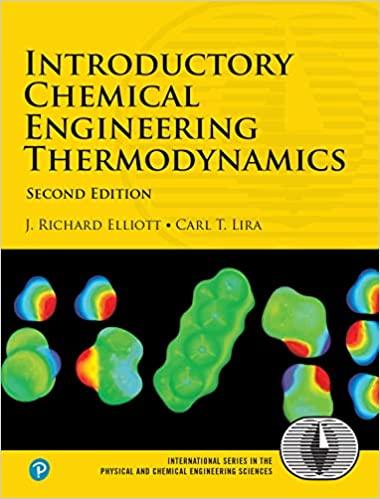Corrosion resistant alloys (such as nickel alloys and stainless steels) can be susceptible to crevice corrosion in
Question:
Corrosion resistant alloys (such as nickel alloys and stainless steels) can be susceptible to crevice corrosion in solutions where no corrosion is observed in the bulk solution. For example, nickel base alloys are immune to corrosion in seawater; however, in areas where two pieces of this alloy are joined (typically by a flange and an o-ring) crevice corrosion may be observed. This phenomenon occurs as the result of two conditions, restricted mass transport and water hydrolysis which both act to make the solution inside a crevice more aggressive. Water hydrolysis occurs when metal cations react with water to form acid (H+):![]()
In a bulk solution diffusion, convection and migration transport the acid away from the surface and no damaging effects are observed. However, the restricted mass transport inside a crevice results in accumulation of metal ions under the crevice former and acidification. As a result, the alloy can be exposed to a very aggressive environment. The pH inside the crevice can be calculated from knowledge of empirically determined concentration quotients (Qxy) where:![Oxy = [H+] [M+]x 18.175](https://dsd5zvtm8ll6.cloudfront.net/si.question.images/images/question_images/1696/2/4/4/297651aa249db48d1696244296335.jpg)
You will note that Qxy is similar to Ka in form; however, here we use concentrations and not activities. Qxy is another way to express K = Ka/Kγ as given in then end of Section 18.8. As a practical example of this phenomenon, consider austenitic stainless steels which are generally composed of Fe, Ni, and Cr. Corrosion results in the formation of metal cations in solution, the most aggressive cation for stainless steel being Cr+3.
(a) Given that log(Q13) = –4.6 for Cr+3 at a temperature and ionic strength of interest, write the hydrolysis reaction (Eqn. 18.174). Then, solve the corresponding concentration quotient (Eqn. 18.175) to obtain a relation between pH and the concentration of [Cr+3].
(b) Make a table of the crevice concentrations that result in pH = {6, 4, 2}.
(c) Explain why the concentration of Mx(OH)y(xy – y)+ does not appear in Eqn. 18.175
(d) For Fe2+, log Q12 = –9.5, and for Ni2+, logQ12 = –10.5. Repeat (a) for each of these ions and compare the crevice concentrations with those in part (b).
Step by Step Answer:

Introductory Chemical Engineering Thermodynamics
ISBN: 9780136068549
2nd Edition
Authors: J. Elliott, Carl Lira





